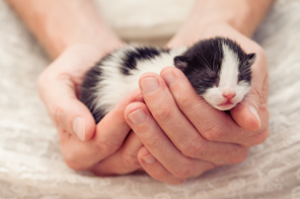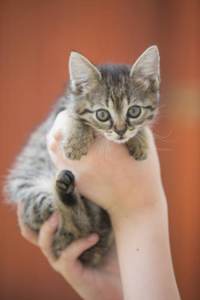We all have moments when we impulsively want to bring an adorable and charming cat into our lives.
However, it's not advisable to adopt a cat on a whim.
This is because doing so, without proper care and commitment, can lead to the abandonment of cats, ultimately resulting in euthanasia.
In this article, we will explore the circumstances surrounding cat euthanasia.
Table of Contents
1. The Reality of Cat Euthanasia
1-1. Number and Trends of Euthanized Cats
1-2. Why Are Cats Euthanized?
1-3. Methods of Euthanasia
1-4. Reasons to Remain Concerned Even as Euthanasia Numbers Decrease
2. Efforts by Local Governments
2-1. Yokohama City
2-2. Chiyoda Ward
2-3. Nara City
2-4. Nagoya City
3. Challenges and Solutions to Reduce Adoptions and Euthanasia
3-1. Stop Unnecessary Feeding of Stray Cats
3-2. Correct Misconceptions About Animal Welfare Centers
3-3. Promote Spaying and Neutering
1. The Reality of Cat Euthanasia

Do you know how many cats are euthanized annually?
And why do cats end up being euthanized?
1-1. Number and Trends of Euthanized Cats
In the fiscal year 2020, 44,798 cats were taken in.
In 2017, the number was 62,137 cats, and in 2014, it was 237,246 cats.
Thanks to efforts by health centers and local governments, the number of cats taken in has steadily decreased over the years.
Particularly, the "Zero Euthanasia of Cats" initiative promoted by the government and local authorities has had a significant impact.
However, in the fiscal year 2020, 19,705 cats were euthanized, which means that nearly half of the taken-in cats were euthanized.
Furthermore, the majority of cats euthanized are very young kittens.
1-2. Why Are Cats Euthanized?
Cats can give birth multiple times a year, with each litter consisting of around five kittens.
They can become pregnant again in as little as six months, resulting in a high number of kittens throughout their lives.
While it's wonderful if cat owners can care for the kittens their cats give birth to, many owners abandon them, leading to an increase in the number of cats left to fend for themselves.
As the number of kittens increases, it becomes challenging to provide proper care, and issues like excessive noise and litter problems arise.
To address these problems, it is crucial to spay and neuter cats. However, many cat owners neglect these procedures, contributing to euthanasia.
Additionally, natural disasters like the Great East Japan Earthquake can separate cats from their owners, leading to their protection and ultimately euthanasia.
1-3. Methods of Euthanasia
Cat euthanasia is carried out through either carbon dioxide gas-induced suffocation or euthanasia by injection of drugs.
Carbon dioxide gas euthanasia involves placing cats in a box called the "Dream Box" and introducing gas to increase the concentration of carbon dioxide, causing suffocation.
After the gas is introduced, the door remains closed for 15 minutes to ensure the euthanasia is complete.
The name "Dream Box" is given with the hope that cats pass away peacefully, like falling asleep.
If cats brought to health centers or animal welfare organizations are not claimed by their owners within 3 to 7 days, they may be euthanized.
Many cat owners, unable to care for their cats any longer, bring them to health centers or animal welfare centers as a temporary solution, inadvertently contributing to unnecessary euthanasia.
1-4. Reasons to Remain Concerned Even as Euthanasia Numbers Decrease
The number of cats euthanized has decreased over the years, but there are still reasons to remain concerned.
Firstly, while the number of cats euthanized is decreasing, the number of cats being taken in remains high.
This means that the resources and efforts of health centers and local governments are still stretched to the limit.
Secondly, while the number of cats euthanized has decreased overall, the percentage of young kittens among those euthanized remains high.
This indicates that the issue of irresponsible breeding and abandonment persists.
To eliminate cat euthanasia completely, a combination of efforts by local governments, cat owners, and the general public is required.
2. Efforts by Local Governments
Local governments in Japan are actively working to reduce cat euthanasia.
Here are some examples of efforts made by local governments:
2-1. Yokohama City
Yokohama City has implemented a "No Euthanasia of Cats" policy since 2018.
They have also worked on promoting the importance of spaying and neutering to reduce the number of kittens born.
Through these efforts, Yokohama City has been successful in reducing the number of cats euthanized.
They also actively promote cat adoptions and offer support to individuals and organizations involved in rescuing and caring for cats.
2-2. Chiyoda Ward
Chiyoda Ward in Tokyo has implemented various measures to reduce cat euthanasia.
They have established a support center for abandoned cats and offer temporary housing and medical care.
Chiyoda Ward actively encourages residents to adopt cats and supports local organizations in their rescue efforts.
They also conduct educational activities to raise awareness about responsible pet ownership.
2-3. Nara City
Nara City has been promoting the "Zero Euthanasia of Cats" initiative since 2016.
They actively collaborate with animal welfare organizations and local residents to rescue and care for cats in need.
Nara City also provides financial support to individuals and organizations involved in cat rescue activities.
Their efforts have led to a significant reduction in cat euthanasia.
2-4. Nagoya City
Nagoya City has been working to reduce cat euthanasia through a comprehensive approach.
They provide information on cat adoptions and promote spaying and neutering.
Nagoya City also conducts public awareness campaigns to encourage responsible pet ownership.
They have made progress in reducing the number of cats euthanized and continue to expand their efforts.
3. Challenges and Solutions to Reduce Adoptions and Euthanasia
While local governments and organizations are making efforts to reduce cat euthanasia, challenges remain.
Here are some challenges and potential solutions:
3-1. Stop Unnecessary Feeding of Stray Cats
Feeding stray cats without providing proper care can lead to overpopulation and abandonment issues.
It's essential to discourage unnecessary feeding and instead encourage reporting stray cats to local authorities or organizations for proper care.
3-2. Correct Misconceptions About Animal Welfare Centers
Many people have misconceptions about animal welfare centers, believing that cats brought there will be euthanized.
It's important to educate the public about the efforts these centers make to care for and rehome animals.
3-3. Promote Spaying and Neutering
Spaying and neutering are crucial to reducing the number of kittens born and subsequently euthanized.
Efforts should be made to make these procedures more accessible and affordable for cat owners.
We hope this article has shed light on the reality of cat euthanasia and the efforts made by local governments and organizations to address this issue.
By raising awareness and taking responsible actions, we can work towards a future where no cats are euthanized due to lack of care and compassion.



